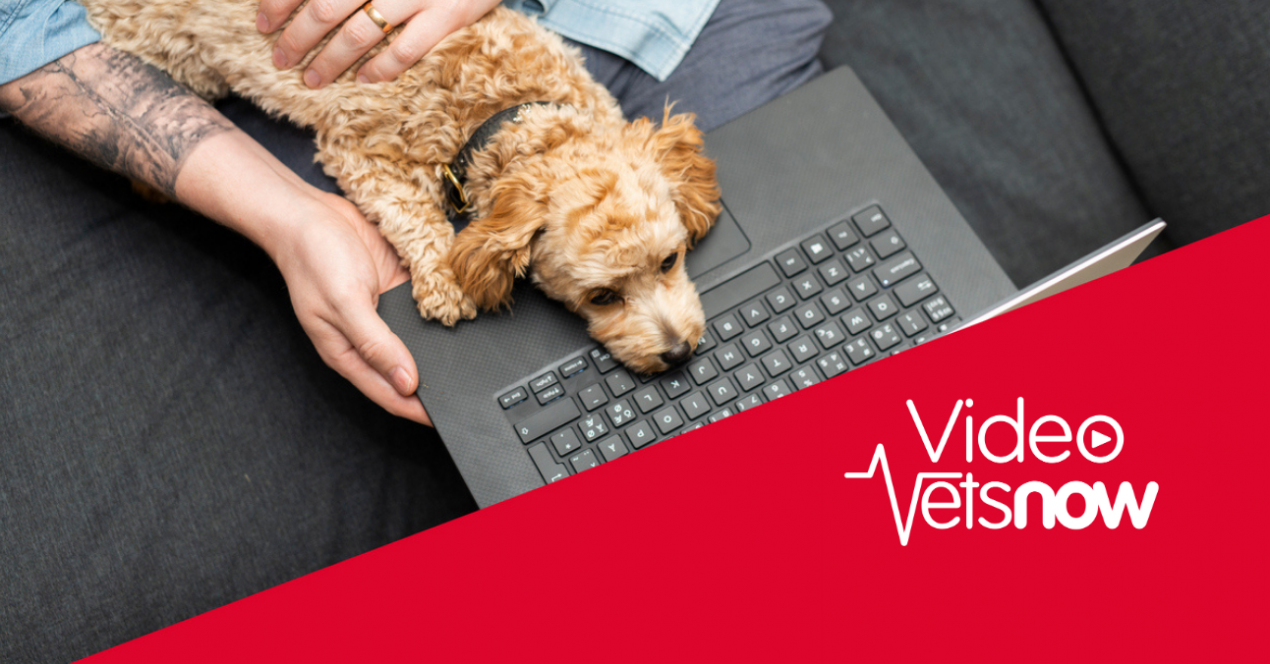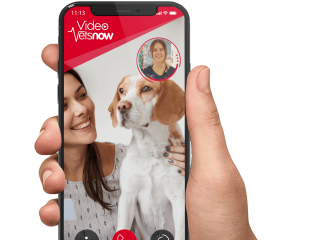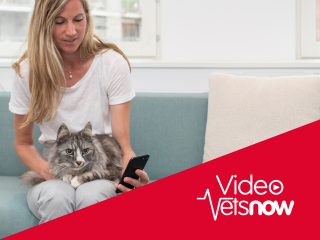
Success of Video Vets Now shows there is scope for increased use of telemedicine within the veterinary profession
It’s the one thing just about everyone in the world has said in the past 12 months: “It’s been a year like no other.”
That’s definitely the case in the veterinary profession, with shut surgeries and anxious owners, pressured practices and stressed staff.
But one area which has blossomed is online veterinary services. So much so, that Vets Now has just promoted its head of clinical intelligence, Dave Leicester, to a newly-created post, head of telehealth.
Dave oversees a team of vets who cover the Video Vets Now rota around their shifts at our network of out-of-hours pet emergency clinics.
Here, Dave talks about the benefits and challenges of this booming new era.

I couldn’t be happier to be at the forefront of the telemedicine initiative which I’m convinced is helping vets and pets alike.
For me, telemedicine has been a gradual process, not some sudden lightbulb moment.
It’s been something I’ve been following since 2015 when the first offerings came to market.
The current legislation is dated and was never intended to provide for recent technological advancements. Recent years have seen telemedicine providers acting as ‘disruptive innovators’ and pushing for regulatory change.
Every country is grappling with the challenges of the veterinary-client-patient-relationship, VCPR – how an animal is considered to be under the care of the veterinary surgeon.
The RCVS Code of Professional Conduct states that it isn’t possible to form the ‘under care’ relationship purely by remote means and that restricts prescribing, whilst in some other countries, VCPR regulations are more relaxed and remote prescribing is permitted.
Telemedicine requires updated regulation and, currently, the RCVS is undergoing consultation on ‘under care’ and the provision of 24/7 care.
While that is still for the future, the COVID-19 pandemic has accelerated the telemedicine sector in a quite remarkable fashion.
We have seen developments, that would have taken several years, happen in the space of the past 12 hectic months as pet owners demanded greater access to remote healthcare.
Vets Now were more than ready to meet that need.
Fundamentally, working within the Code, where an existing ‘under care’ relationship is not in place, remote services are limited to triage; telemedicine providers cannot provide a full consultation service and cannot diagnose, prognose or prescribe.
However, we can make triage assessments, and general, non-specific healthcare advice can be provided.
Triage is a fundamental tenet of ECC medicine; it’s what Vets Now staff are specially trained for, and do every single day. So, that’s our USP; being able to offer that depth of experience with the support of a national network of pet emergency clinics and 24/7 speciality hospitals.
Video Vets Now clinicians are all very experienced in working in emergency clinics – in fact, that’s where most of them still work.
They rapidly make the best triage decisions, ensuring that patients receive the care that they need, at the most appropriate location, at the most appropriate time.
Vets Now began planning a telemedicine service in 2017 and were putting the final steps in place to launch in April 2020.
It was just a case of bringing that forward when lockdown was announced last March.

Video Vets Now allows pet owners to speak to an experienced emergency clinician on their laptop or mobile device from the comfort of their home.
At launch, the service was exclusively out of hours but, immediately, we could see the demand and we soon extended this to 8 am to 11 pm each day. We are positioned to go 24/7, if the demand is there.
As footfall has increased, we have added extra clinicians during busy times and I now have a team of 13 vets as well as several teams of vital support staff behind them.
For those who have taken on the Video Vets Now roles, it really works for them, providing excellent work-life balance.
Most of my team have young children and being able to work from home, as well as the clinic, has been a real help, especially when they have been home-schooling recently.
A couple of staff have spent time quarantined abroad, unable to return to the UK. They have been able to expand their career portfolio while staying within the company and maintain their ECC skills.
With staffing and technology solutions, which can be complicated, it has been a big undertaking, as is managing referral to daytime practices.
All telemedicine providers have to decide where to refer cases, if appropriate.
With our network of pet emergency clinics, we can easily refer urgent cases out of hours. And, as part of the IVC Evidensia group, we have the support of IVC Evidensia practices for unregistered clients during daytime business hours.
But, of course, we also have the very important and extensive relationship with our 1400 independent and corporate partner practices.
We are absolutely committed to working with them to return their registered clients to them, during the daytime, if that is clinically appropriate.
About one in three of Video Vets Now calls are referred to a face-to-face consultation, meaning two thirds don’t require to be seen by a vet. As cases are triaged remotely, we’ve found it frees up clinical staff for genuine emergencies. Without the service, many of those clients would have no other option than to attend for a full consultation at one of our clinics; so, clients save money too, allowing them to save their budget to spend at their daytime practices.
Following the triage consultation, if the pet does need a face-to-face consultation, the Video Vets Now consultation fee is refunded. We call this our ‘Never Pay Twice’ promise, and it applies regardless of where that follow on consultation takes place. We see this as a win-win situation for clients and practices.

Of course, you are only ever going to have a successful service if it’s something people are happy to use.
Until a few years ago there was no option of telemedicine in human medicine but, as those became established, it was common sense that these services would be developed for veterinary patients too.
And, the changes in so many people’s lives in the past year have definitely helped to drive the boom in telemedicine.
It was novel at first, but even if clients haven’t had a medical consultation themselves, many have become used to video-conferencing software, like Zoom, for either work or leisure.
Despite that, the vets have had to manage their expectations as to what can be achieved through remote examination of pets.
There can be challenges with lighting, quality of cameras, device idiosyncrasies and bandwidth. Clients can provide images and videos, asynchronously, to supplement the consultation, which can help.
However, regardless of how simple the software is to use, much depends on how tech-savvy clients are, so vets have to err on the side of caution during triage.
Strange as it might sound, it also depends on whether the pet is actually present.
The team record their consultations which we review, for training and quality assurance, and it’s surprising how many start without the pet. You may expect that the client, having booked an appointment, will be ready to go with the pet sitting beside them.
But a majority begin solely with the client, who then has to go and try to find their pet in another room or coax it out from under a bed.
However, there is no doubt that our Video Vets Now service has been warmly welcomed by pet owners.
The feedback we receive is overwhelmingly positive and clients really appreciate the value they get from this. And, our ‘Never Pay Twice’ promise means there really isn’t any financial risk.
I think there is still one main outstanding controversy and that is there is still a misunderstanding among some clients with regards to prescribing.
I think that is partly down to the expectations which clients have from their own situation.
A lot of human healthcare now has remote consultation and prescribing. So, some clients attend thinking that we will be able to supply POM-V medications.
Despite a temporary relaxation in the regulations regarding remote prescribing during the pandemic, the obligation to ensure safe and ethical care is an overriding principle. There is a requirement for veterinary surgeons to ensure that they can provide 24/7 aftercare to pets that have medication prescribed and, even though Vets Now can do this through our network of pet emergency clinics, Video Vets Now does not prescribe medication, and has not sought to offer that provision during the temporary relaxation.
The other significant challenge is that some clients request a consultation for conditions which are not appropriate, breathing difficulties for example.
We do signpost clients away from Video Vets Now and towards a face-to-face consultation, where it is obvious that is what is required. The team are proactive and contact clients ahead of their scheduled appointment if they have concerns over the suitability of the service for their pet’s needs.
Overall, though, these challenges can be mitigated and there is massive scope for increased use of telemedicine within the veterinary profession.
And there are several companies who can now offer a service.
It has become something that clients have grown to expect and here at Vets Now we feel we have the most experienced and appropriately trained staff and the widest support network to provide the very best care to clients and their pets.
And as consequence, we are expecting to see its use grow even more during 2021.
